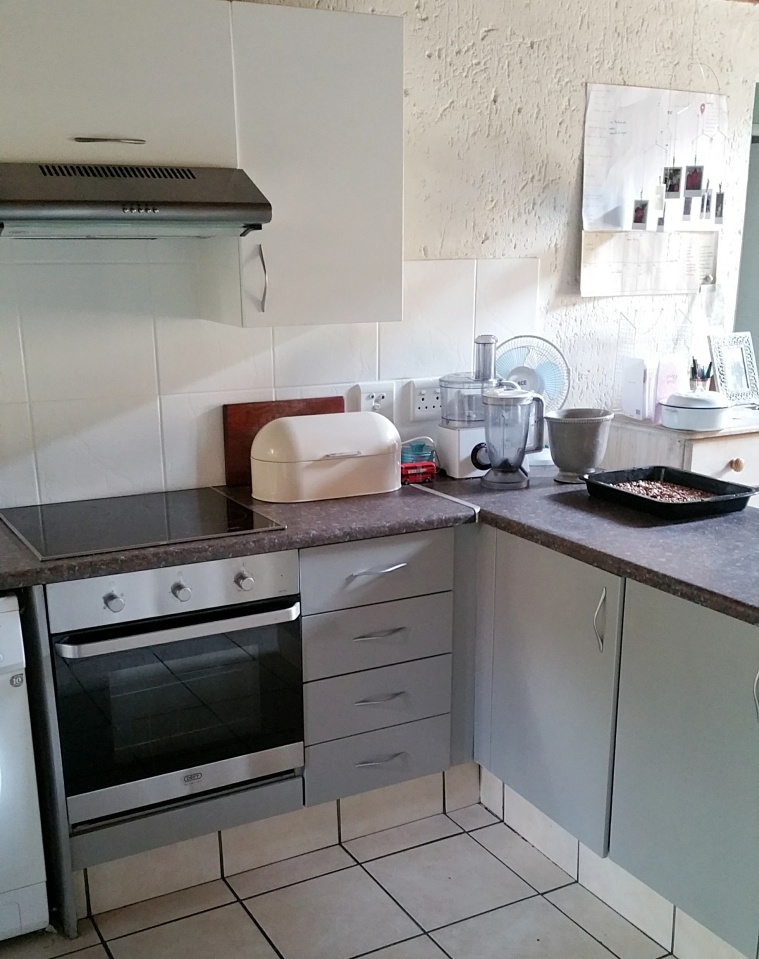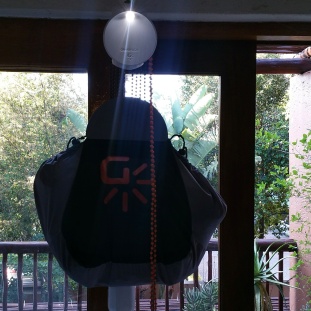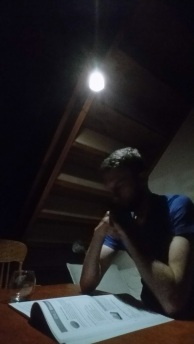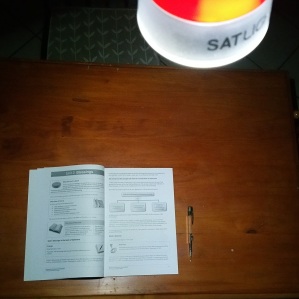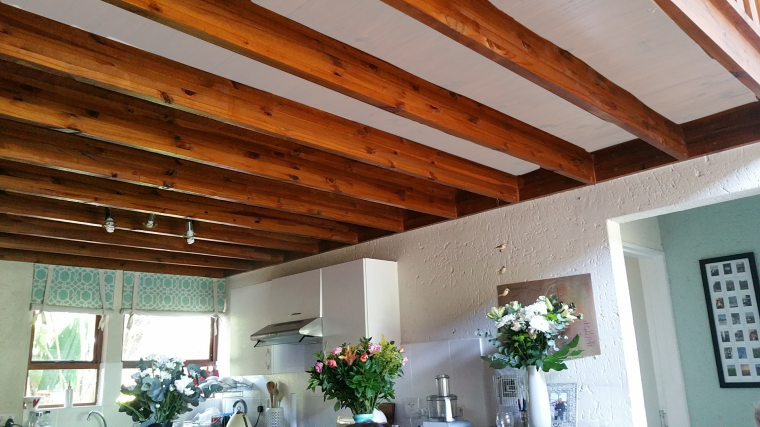Our kitchen was a little dark, and we wanted to spruce it up a bit. We had a tin of paint leftover from our cot and bench projects, so I decided to give it a go. I also found a tin of good intentions in the form of a wood and tile primer from 2013.
Being partial to great technology, I opened my Sketchbook app and came up with a mock-up that approximated some of Sarah’s kitchen Pinterest board. Here’s the before shot, and the mock-up plan:

Before: Pretend we made it extra messy, like those sad grey infomercial shots.

The Plan: White above and grey below, gives a rough idea of what we were aiming for
So, with our baby’s delivery date safely far in the future (or so we thought), I got to preparing the surfaces.
The primer was quite drippy, so the finish isn’t perfect, but two coats with sanding between got us to an already lighter space which seemed a lot roomier. I’d say it breathed better, but for the dizzying fumes.
It was a successful weekend job so far, with intentions to do the final paint layer on the following Tuesday evening. Well, I caught a mild bug and decided to put off the labour til Thursday. When Thursday came along, our baby decided it was time for a different type of labour. We spent the night at the hospital and my champion wife laboured hard, with the help of some really excellent medical experts. Our baby girl was born on Friday morning.
Back home, my son and I held the fort, and waited for the girls to come home. I say “waited” but it wasn’t idle time – I mean there wasn’t even time to pick up a paintbrush.
However, in the new week, paternity leave gave me some time while my boy was at school at the ladies rested. Carpe Diem, so they say. Here’s the result:
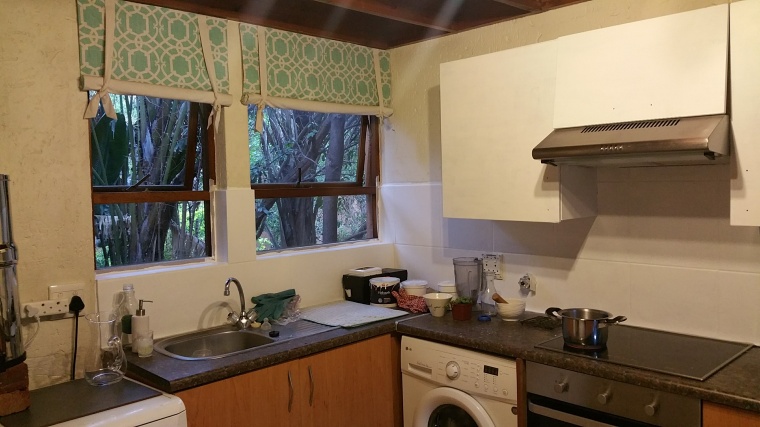
After: Tiles and top cupboards a nice shiny white.
We are really pleased with it. So, what’s next? Well, the walls need a fresh and lighter coat, in keeping with the plan, and we need to go choose a grey for the bottom cupboards. The walls are deeply textured and take a lot of paint, but we’ll take the plunge soon. Beyond that, here’s a sneak peek of the next intention, which is to paint the ceiling. The pictures also happens to show off the new light feel of the cupboards. It really is encouraging to see what a difference a bit of DIY can make, especially if the cost of buying the paint happened a long time ago!




